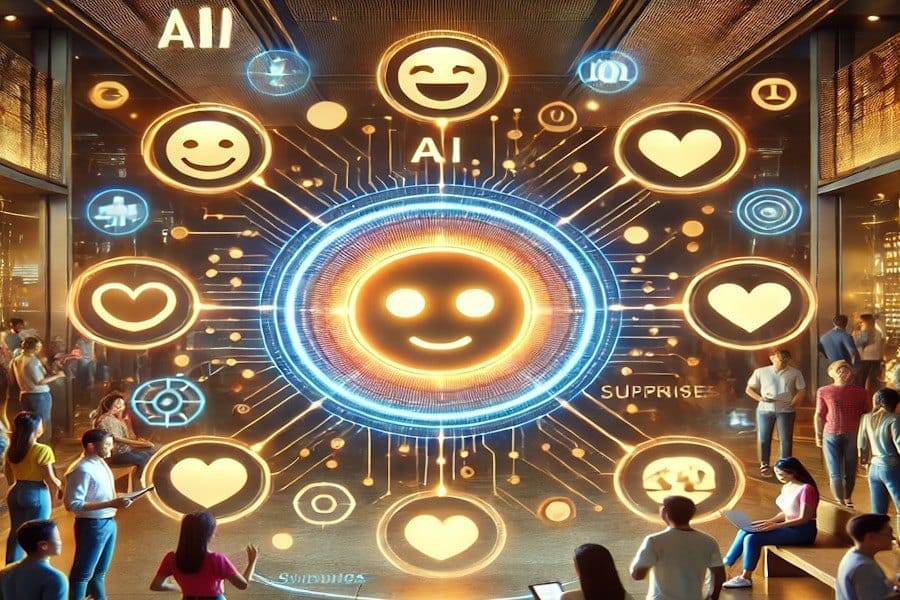Type: Article -> Category: AI What Is
Sentimental AI
Understanding Emotion in Machines

Publish Date: Last Updated: 10th November 2025
Author: nick smith- With the help of CHATGPT
Introduction
In recent years, Artificial Intelligence (AI) has grown in its ability to perform complex tasks, from autonomous driving to creative writing. One emerging frontier in this technological evolution is Sentimental AI—a branch of AI that focuses on understanding, interpreting, and responding to human emotions. This field holds immense potential for enhancing human-computer interaction and fostering deeper connections between technology and its users.
What is Sentimental AI?
Sentimental AI, often referred to as affective computing or emotion AI, is the technology designed to recognize, process, and simulate human emotions. It integrates machine learning, natural language processing (NLP), and computer vision to gauge sentiment through text, speech, facial expressions, and even physiological signals.
Core Components of Sentimental AI
- Emotion Detection: Identifying emotions such as happiness, sadness, anger, or surprise in human input.
- Sentiment Analysis: Evaluating the underlying sentiment (positive, negative, or neutral) in textual or verbal communication.
- Behavioral Analytics: Observing patterns in user behavior to predict emotional states.
- Response Generation: Crafting responses that align with the identified sentiment, creating empathetic interactions.
Applications of Sentimental AI
Sentimental AI is transforming industries by improving user engagement, customer satisfaction, and decision-making processes. Here are some notable applications:
1. Customer Service
AI chatbots and virtual assistants equipped with sentiment analysis can gauge customer frustration or satisfaction, providing tailored support to enhance the user experience.
2. Healthcare
Emotion AI is being used in mental health applications to detect early signs of depression, anxiety, or stress, offering proactive interventions and support.
3. Education
Adaptive learning platforms use Sentimental AI to assess student engagement and adjust content delivery to maintain focus and motivation.
4. Entertainment
Gaming and virtual reality (VR) systems leverage emotional input to create more immersive and personalized experiences.
5. Marketing
Marketers use sentiment analysis to understand customer perceptions of products and services, refining their campaigns based on emotional insights.
How Does Sentimental AI Work?
1. Data Collection
Sentimental AI collects data from multiple sources, including text (emails, social media), audio (tone and pitch), video (facial expressions), and physiological metrics (heart rate, body language).
2. Processing Algorithms
AI uses deep learning and NLP algorithms to process this data. For instance, a facial recognition model may analyze microexpressions to deduce emotional states.
3. Model Training
Machine learning models are trained using vast datasets annotated with emotional labels, enabling the system to recognize patterns and predict emotions.
Challenges in Sentimental AI
Despite its promise, Sentimental AI faces several challenges:
- Cultural Bias: Emotional expressions vary across cultures, requiring systems to be sensitive to diversity.
- Data Privacy: Collecting emotional data raises ethical concerns about user consent and data security.
- Accuracy: Understanding nuanced emotions like sarcasm or mixed feelings remains a significant hurdle.
The Future of Sentimental AI
The future of Sentimental AI lies in its ability to enhance empathy in technology. As these systems become more accurate and culturally aware, they could revolutionize areas like mental health care, education, and even human relationships.
Innovations in neural networks and multi-modal emotion recognition will enable more sophisticated interactions, bridging the gap between human and machine communication.
Conclusion
Sentimental AI is shaping a new era of human-centered technology. By enabling machines to understand and respond to our emotions, it promises to create a world where technology is not only smart but also empathetic.
Latest AI Articles
AI Questions and Answers section for Sentimental AI: Understanding Emotion in Machines
Welcome to a new feature where you can interact with our AI called Jeannie. You can ask her anything relating to this article. If this feature is available, you should see a small genie lamp above this text. Click on the lamp to start a chat or view the following questions that Jeannie has answered relating to Sentimental AI: Understanding Emotion in Machines.
Be the first to ask our Jeannie AI a question about this article
Look for the gold latern at the bottom right of your screen and click on it to enable Jeannie AI Chat.
Type: Article -> Category: AI What Is










